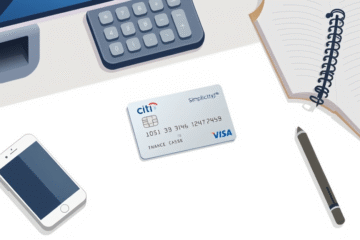Essential Guide to Applying for a Card
Card Application can be a daunting process, especially for newcomers to the world of credit.
This article will delve into the important factors to consider before applying for a credit card, including how to understand your options, evaluate your financial situation, and check your credit score.
We will also explore the benefits of secured cards for beginners, the significance of comparing different offers, and the importance of understanding interest rates and fees.
By arming yourself with this knowledge, you can make informed decisions that align with your financial goals and build a positive credit history.
Identifying the Main Types of Credit Cards
Understanding different credit card categories is essential for those striving to make informed financial decisions.
With a clear perspective on various cards, consumers can select the one aligning with their financial goals and habits.
The most common types of credit cards include standard cards, which offer basic credit-building opportunities and often come with no annual fee.
Rewards cards provide points or miles for purchases, and are suitable for individuals with a good credit history.
Cashback cards return a percentage of purchases as cash, ideal for everyday expenses.
Secured cards, requiring a cash deposit, are crafted for credit-building, particularly for those with poor or no credit.
Student cards offer the same benefits as regular cards but cater specifically to college students with limited credit backgrounds.
| Card | Eligibility | Typical Fees |
|---|---|---|
| Rewards | Good credit | Annual fee possible |
| Cashback | Varies, often average credit | Generally no annual fee |
| Secured | No credit | Deposit required |
| Student | Limited credit | Low or no annual fee |
*For further insights on credit card types, consult Bankrate’s Credit Card Guide.*
Evaluating Your Financial Health Before You Apply
Before applying for a credit card, it’s essential to carefully evaluate your financial health beginning with an honest assessment of your income.
Knowing exactly how much you earn down to the last cent is crucial as it allows you to allocate funds appropriately.
Track every expense, whether it is substantial or minor, to gain a clear picture of where your money goes each month, which can help in identifying unnecessary expenditures that might be cut to ease other financial pressures.
Understanding your recurring costs is equally vital.
Regularly consider expenditures such as rent, utilities, groceries, and transportation.
Make sure your budget accounts for these necessary expenses before introducing another line of credit.
Relevant text: unfunded liabilities can severely impact your financial stability if they grow unchecked.
A practical tool to visualize this includes establishing a simple budget and comparing it against your income, ensuring expenses never outweigh earnings.
Another critical factor to consider is your existing debt load.
Utilize financial guides such as the Debt Management Guide on Investopedia to understand how best to balance new obligations with old ones.
Always remember, never borrow more than you can repay each month, as failure to do so could lead to financial turmoil.
This reinforces the importance of deciding whether taking on new credit aligns with your current financial state or if adjustments must be made to enhance your financial security.
Credit Scores Explained Simply
A credit score is a numerical expression representing an individual’s creditworthiness, enabling lenders to assess the risk of lending money or extending credit.
This three-digit number varies and is calculated using several factors, among which payment history weighs the most.
MyFICO’s guide on credit scores highlights how these scores impact available credit and terms, such as interest rates.
Really understanding your credit score is crucial for financial health, as it influences your ability to qualify for credit cards, loans, and favorable terms.
To obtain a credit score, you can request it from major credit bureaus like Equifax, Experian, and TransUnion, where checking your score at least twice a year is recommended.
Scores generally range from 300 to 850, with higher scores signaling positive credit behavior to potential lenders.
A higher score can improve odds of credit approval and secure better terms.
According to the FTC’s advice on credit scores, knowing these ranges helps in interpreting how lenders view your credit.
Ultimately, maintaining a strong payment history and low credit utilization ratio are essential strategies for a better score.
How to Compare Credit Card Offers Like a Pro
Understanding how to compare credit card offers effectively can lead to significant savings over time.
By evaluating different aspects such as interest rates and fees, consumers can avoid unnecessary costs and maximize the benefits of card ownership.
Using resources like the NerdWallet Credit Card Comparison Tool allows consumers to align their choices with financial goals.
- Interest Rate (APR)—the cost of carrying a balance
- Annual Fee—a yearly charge for card membership
- Rewards Structure—points, cashback, or miles earned per dollar spent
- Grace Period—time allowed to pay off purchases without incurring interest
- Credit Limit—the maximum amount you can charge to the card
When choosing a credit card, it’s crucial to evaluate these features in the context of your own spending and payment habits.
For instance, if you frequently pay off your balance in full, focusing on cards with robust rewards and zero annual fees might be more beneficial than seeking the lowest APR.
Always ensure the card you pick supports your financial strategy, helping you avoid debt and build a positive credit history.
When Secured Cards Make Sense
Secured credit cards serve as an invaluable tool for individuals aiming to establish or rebuild their credit.
Requiring a security deposit, typically equivalent to the credit limit, these cards help mitigate risks for issuers and enable higher approval chances for applicants with limited or poor credit history.
According to American Express, these cards report the user’s activity to major credit bureaus, thus providing a credit-building power comparable to traditional credit cards.
However, the primary differentiator remains in the prerequisite deposit, which secures the lender’s investment but requires diligence from the cardholder to avoid penalties.
Transitioning responsibly from a secured card to an unsecured variant can significantly amplify one’s financial opportunities.
In contrast, unsecured credit cards offer more benefits without the need for collateral, albeit at the cost of stricter approval criteria, often necessitating higher credit scores.
While these cards can provide higher credit limits, balance transfers, and enticing rewards, they also pose greater risks for users not prepared to manage their spending.
One must acknowledge that losing the deposit if you default on a secured credit card presents a clear yet manageable risk when trying to build a credit history.
Thoughtful use of secured cards not only safeguards against such losses but also helps in developing financial habits crucial for a stable economic future.
Ultimately, these two card types cater to different needs but converge on the common goal of fostering responsible credit use.
Decoding Interest Rates, Fees, and Legal Terms
Understanding the various components of a credit card agreement is crucial for managing your finances effectively.
Among these, the Annual Percentage Rate (APR) stands out as a critical factor.
APR can vary depending on the type of credit card and issuer.
A variable APR means the interest rate can change based on an index, like the prime rate.
This fluctuation impacts how much you pay if you carry a balance from month to month.
On the other hand, a fixed-rate APR stays constant, though issuers may still adjust it with prior notice.
Understanding APR is vital to avoid surprises in monthly statements.
For more details, visit Consumer Financial Protection Bureau’s guide on credit card termsGrace periods offer a buffer allowing payments without accruing interest if the full balance is settled by the due date.
However, late payments can trigger a Relevant text impact on your account beyond just accruing interest.
You may incur a late fee, determined by your card issuer.
Default penalty rate is a severe repercussion for late payments or other breaches.
This rate significantly increases the interest on outstanding balances, affecting your overall debt management.
More information on penalties is available on BankrateBeyond interest rates, other fees may apply, such as annual fees for holding certain types of credit cards.
Not all cards charge these, but they are common in rewards or premium cards offering added benefits.
Weigh these fees against the perks you gain to ensure they contribute to your financial goals.
By understanding these terms, you empower yourself to make informed decisions that align with your financial situation.
For more information on credit card fees, visit Consumer Finance Bureau resources
Linking Your Card Choice to Financial Goals
It’s vital to clearly define your financial goals, whether they involve building credit, earning travel points, or improving cash flow management.
Identifying these goals allows you to match the card to the mission.
For those aiming to build credit, a secured card that reports to major credit bureaus could be beneficial.
Meanwhile, frequent travelers might choose a card with strong mileage rewards, optimizing every trip for maximum benefit.
By articulating these goals, you ensure that the credit card you select provides the key benefits aligned with your aspirations.
Furthermore, it’s essential to update goals annually to ensure your financial objectives remain aligned with your circumstances.
Life evolves, and so should your financial tools.
Keep an eye on new card offers and changes to your current card’s terms and conditions.
As you reassess your priorities, make sure your credit cards continue to serve your needs, whether that’s through lower interest rates, enhanced rewards, or additional perks.
This proactive approach ensures your financial strategy remains robust and adjusts seamlessly with your evolving goals.
Habits for Lifelong Responsible Card Use
One of the most crucial habits for maintaining a healthy credit life is ensuring on-time payments every month.
This not only guards against late fees but also positively influences your credit score.
Setting up automatic payments can be a strategic move to ensure punctuality.
Alternatively, setting reminders can help embed the habit of making these payments.
It’s important to pay in full each month if possible, minimizing interest accrual and fostering a cycle of responsible credit use.
Another vital practice is keeping a vigilant eye on your credit card balances.
Monitoring balances frequently ensures you’re not spending beyond your means and helps in keeping utilization rates low, which is beneficial for credit scores.
It’s essential to avoid impulse spending, as it can quickly lead to unmanageable debt.
For more guidance on managing credit card debt, credit monitoring is an excellent tool to help maintain financial control.
Regularly reviewing your card statements is another cornerstone of effective credit card management.
This practice allows you to catch unauthorized transactions promptly and understand your spending patterns better.
By examining statements, you can identify areas where expenses can be curtailed, ensuring a tighter grip on your budget.
Engaging in periodic reviews not only aids in understanding your financial flow but can also strengthen your overall financial discipline.
For those seeking a deeper dive into credit management, Chase offers extensive resources to guide cardholders in becoming more financially savvy.
Card Application decisions should be made with careful consideration of your financial situation and future goals.
By following the guidelines outlined in this article, you can select a card that best fits your needs and take proactive steps toward building a solid credit foundation.



0 Comments